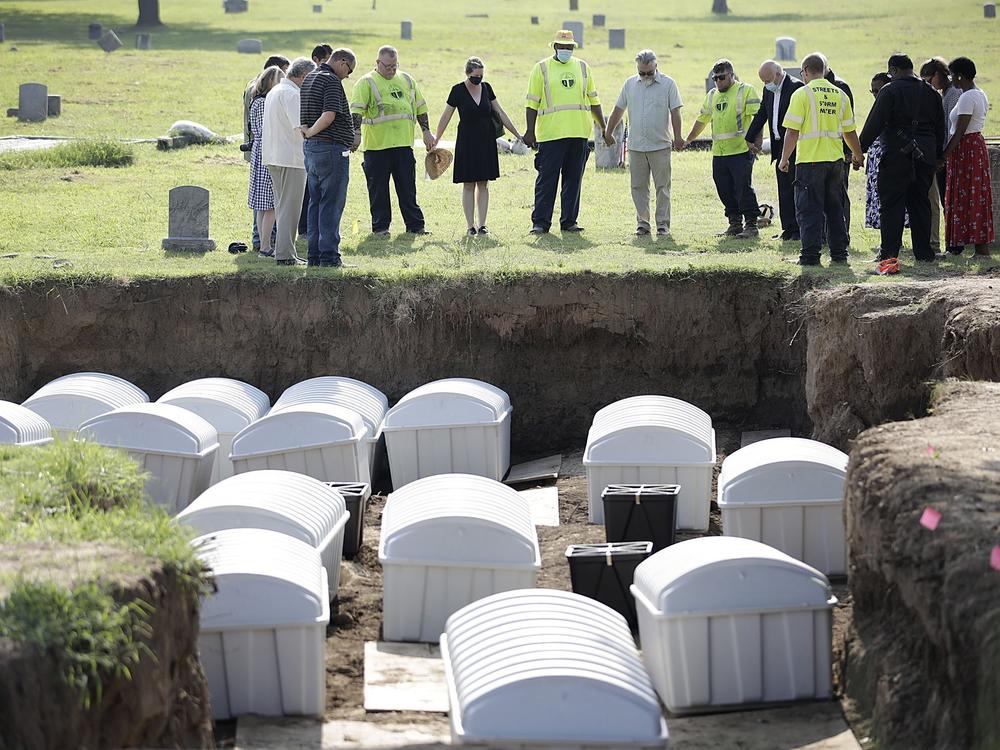Section Branding
Header Content
Exhumations to resume in a bid to identify Tulsa Race Massacre victims
Primary Content
Some of the 19 bodies taken from a Tulsa cemetery and later reburied that could include remains of victims of the 1921 Tulsa Race Massacre will be exhumed again starting Wednesday, part of a bid to gather more DNA for possible identification.
The latest exhumation of bodies, some of which were taken last year from Oaklawn Cemetery in the northeastern Oklahoma city will be followed by another excavation for additional remains.
"There were 14 of the 19 (bodies) that fit the criteria for further DNA analysis," according to city spokesperson Michelle Brooks. "These are the ones that will be re-exhumed."
The 14 sets of remains were sent to Intermountain Forensics in Salt Lake City, Utah, in an attempt to identify them. Brooks said two sets have enough DNA recovered to begin sequencing.
It wasn't immediately clear how many of the 14 will be exhumed a second time, Brooks said.
The remains will be reburied at Oaklawn, where the previous reburial drew protests from about two dozen people who said they are descendants of massacre victims and should have been allowed to attend the ceremony, which was closed to the public.
Intermountain Forensics is seeking people who believe they are descendants of massacre victims to provide genetic material to help scientists when they begin trying to identify remains of possible victims.
The exhumations will be followed by another search for bodies in an area south and west of the areas previously excavated in 2020 and 2021.
None of the remains recovered thus far are confirmed as victims of the massacre in which more than 1,000 homes were burned, hundreds were looted and a thriving business district known as Black Wall Street was destroyed.
Historians who have studied the event estimate the death toll to be between 75 and 300.
Victims were never compensated, however a pending lawsuit seeks reparations for the three remaining known survivors of the violence.
The latest search is expected to end by Nov. 18.
Copyright 2022 NPR. To see more, visit https://www.npr.org.

